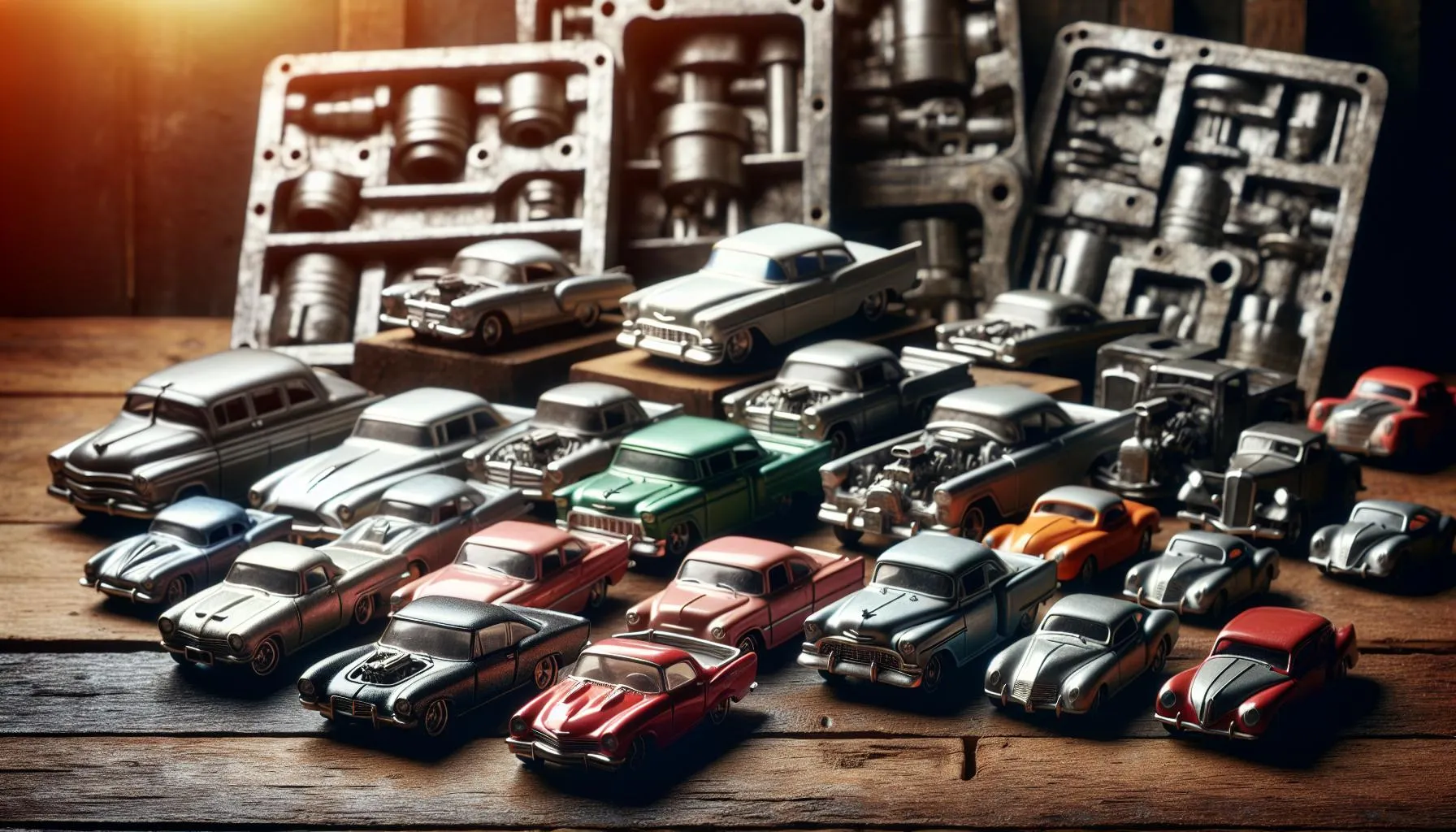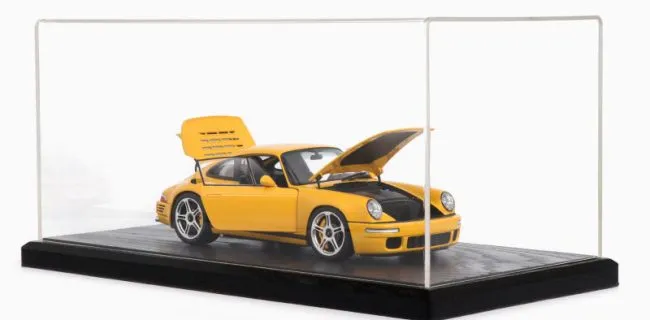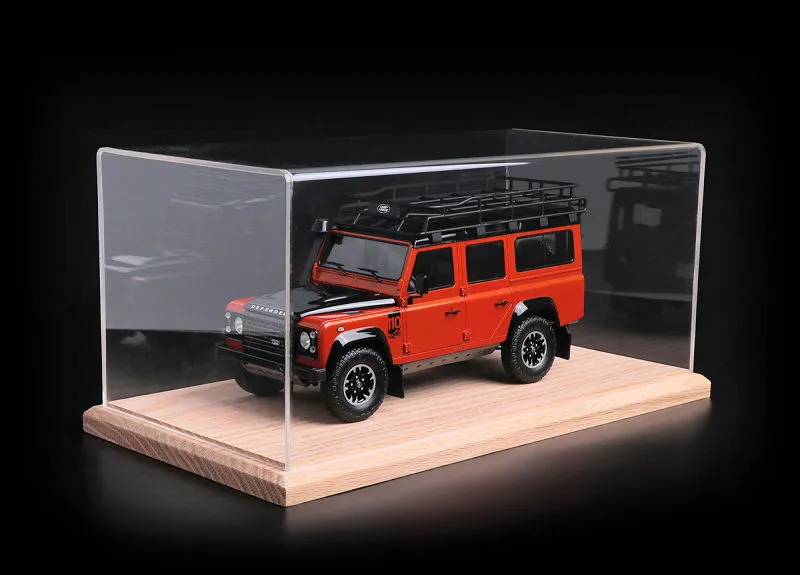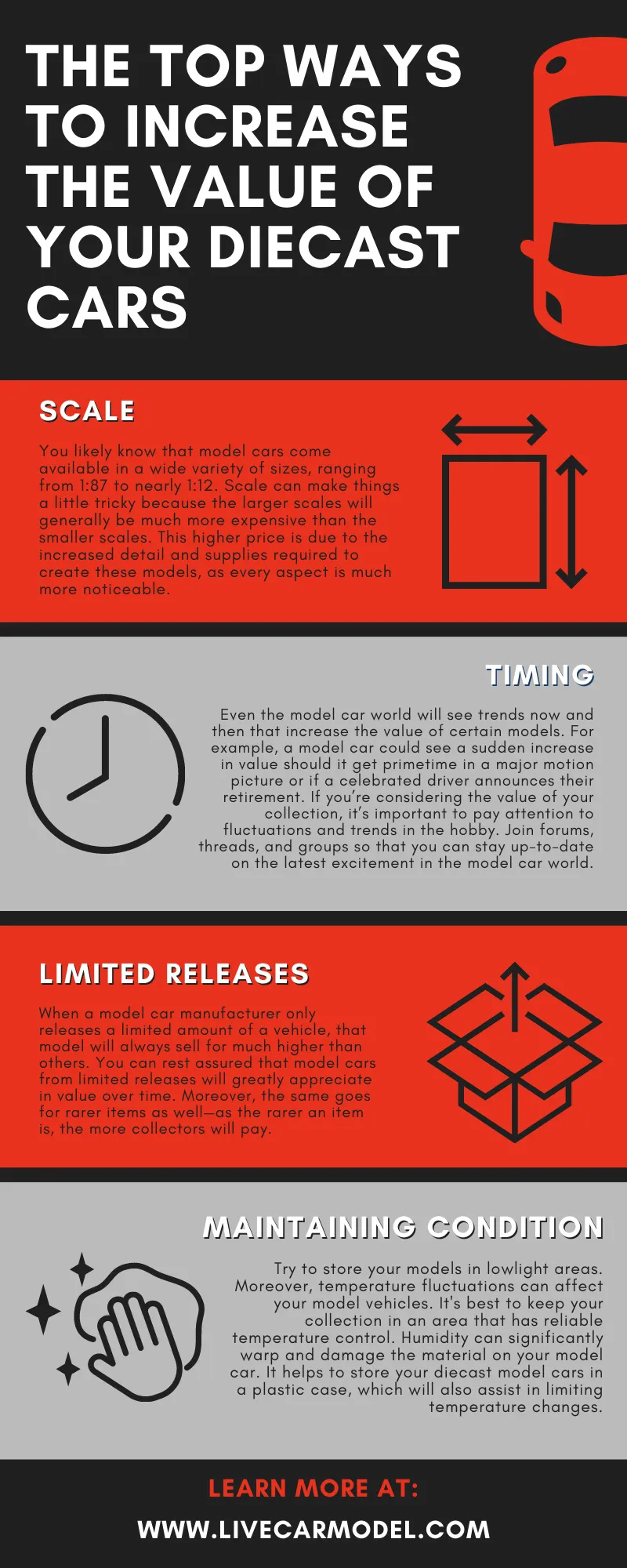What are Diecast Cars?
Diecast cars are miniature replicas of real-life vehicles, typically made from a metal alloy called diecast. These models have captured the hearts of collectors and enthusiasts for generations, offering a tangible link to automotive history and design. While the term ‘diecast’ refers to the manufacturing process – where molten metal is injected into molds under high pressure – it’s also commonly used to describe the finished products themselves. The appeal of diecast cars goes beyond mere aesthetics. They represent a hobby, a form of investment, and a way to connect with a shared passion for automobiles. Whether you’re a seasoned collector or a newcomer to the world of miniature vehicles, understanding the factors that influence their value is crucial.
Factors that Influence Diecast Car Value
The value of diecast cars isn’t arbitrary; it’s determined by a complex interplay of factors that collectors and investors carefully consider. Several elements contribute to a model’s worth, from its rarity and condition to the brand it represents and current market demand. Understanding these factors allows you to make informed decisions about purchasing, selling, and caring for your collection. It’s important to research and stay informed about the market, as trends can shift, and values can fluctuate over time. This guide will explore the top five elements that have the greatest impact on a diecast car’s value, providing a comprehensive overview of what makes these miniature vehicles so sought-after and valuable.
Rarity and Limited Editions

One of the most significant factors in determining a diecast car’s value is its rarity. Limited-edition models, those produced in small quantities, often command higher prices. This scarcity makes them highly desirable among collectors who seek unique and exclusive pieces for their collections. The fewer models produced, the greater the demand and, consequently, the higher the value. Factors contributing to rarity include limited production runs, special commemorative editions, and models exclusive to certain retailers or events. Collectors are always on the lookout for these rare gems, as their value tends to appreciate over time. When assessing a diecast car, always research its production numbers and availability, as this will significantly impact its potential value.
Condition Matters
The condition of a diecast car is paramount to its value. Models in pristine, original condition are far more valuable than those with damage or wear. Collectors place a high premium on models that appear as they did when they left the factory. This includes the paint, decals, tires, and all other components. Any imperfections, such as scratches, dents, fading, or missing parts, can significantly reduce the value. The preservation of the original packaging is also crucial, as it contributes to the overall condition and authenticity of the item. When evaluating a diecast car, carefully inspect it for any signs of wear and tear, and always consider the condition of the box or packaging it came with. A well-preserved model, especially one that’s been kept in its original packaging, can fetch a significantly higher price in the market.
Brand and Manufacturer
The brand and manufacturer of a diecast car also play a substantial role in determining its value. Certain brands, such as Hot Wheels, Matchbox, and certain premium brands, have a long-standing reputation for quality and collectibility. Models from these manufacturers are often highly sought after by collectors, driving up their value. Factors such as the manufacturer’s attention to detail, the accuracy of the model, and the materials used in its construction contribute to its appeal. Furthermore, collaborations between manufacturers and popular car brands or licensing agreements can also enhance a model’s desirability. Collectors often specialize in specific brands or manufacturers, and the values of their products can fluctuate based on trends and collector interest. Researching the manufacturer’s reputation and history is an essential part of evaluating the potential value of a diecast car.
Original Packaging and Documentation

The original packaging and any accompanying documentation significantly contribute to the value of a diecast car. A model in its original box is generally worth far more than a model without one. The box helps to protect the car and is often considered part of the overall collectibility of the item. Original packaging shows that the car has been preserved well over time. Collectors understand that a model with the box is more likely to be in better condition. Documentation, such as certificates of authenticity, brochures, and original receipts, can further enhance a model’s value by providing proof of its rarity and provenance. When assessing a diecast car’s value, always consider the condition and presence of its original packaging and any accompanying documentation.
Market Demand and Trends
Market demand and current trends heavily influence the value of diecast cars. The popularity of certain car models, brands, or eras can significantly impact their prices. What’s ‘hot’ in the collecting world can change rapidly, so staying informed about market trends is vital for any collector or investor. The popularity of specific car models, like classic muscle cars or iconic sports cars, can drive up demand and prices. Likewise, collaborations between manufacturers and popular franchises, such as movie tie-ins, can create buzz and increase value. The rise of online marketplaces and auction sites has also influenced market trends, making it easier to buy and sell diecast cars and contributing to price fluctuations. Keeping up with market trends, such as popular models and the latest collector interests, can help you make informed decisions about your collection and potential investments.
Where to Find Diecast Cars
Diecast cars can be found in a variety of places, both online and offline. Many major retailers carry a selection of diecast cars. Online marketplaces, such as eBay, offer a vast selection of models from various sellers. Specialty diecast stores and antique shops are excellent resources for finding rare and vintage models. Collector’s fairs and conventions provide opportunities to meet other enthusiasts and find valuable additions to your collection. Auctions, both online and in-person, are another way to acquire rare and high-value diecast cars. Building relationships with other collectors and dealers can also help you discover hard-to-find models and stay informed about market trends. Always research the seller and the model before making a purchase, and consider the factors discussed in this guide to assess the value of the car. The world of diecast cars is full of hidden gems, and with the right approach, you can find valuable models that suit your interests and budget.
How to Assess and Evaluate Diecast Cars

Assessing and evaluating the value of diecast cars is a multi-faceted process, involving careful consideration of the factors discussed in this guide. Begin by researching the model’s rarity, production numbers, and availability. Examine the car’s condition, paying close attention to any imperfections, damage, or wear and tear. Check for original packaging and documentation, as these contribute significantly to the value. Research the brand and manufacturer, as well as any collaborations or special editions that might increase desirability. Stay informed about current market trends and the popularity of specific models or eras. Consult online price guides and auction results to get a sense of the market value for similar models. When in doubt, consult with experienced collectors or appraisers, who can provide expert guidance. By taking a systematic approach and considering all the relevant factors, you can make informed decisions about the value of diecast cars, whether you’re buying, selling, or simply enjoying your collection.
